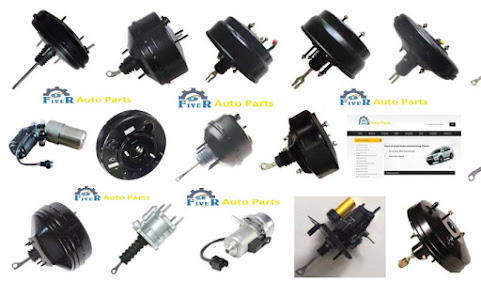Hydraulic Brake Booster: How It Works
Braking systems that use a Hydraulic Brake Booster are known for being sensitive, needing only about half of the applied pedal pressure to generate the same amount of brake pressure as conventional vacuum booster brakes. Because of this and other reasons, they are widely sought after for diesel engines, but they are still the minority compared to vacuum brake boosters.
While vacuum boosters took the braking system to a whole new level, the
hydraulic brake system refined power brakes, making them more efficient, more
powerful, and overall, more beneficial to almost any type of automotive. First
introduced by General Motors in the 1990s, several of their trucks
(particularly ones with diesel engines) came equipped with this Hydroboost
Brake System. Since then, it has become hot rod refurbishes’ secret
weapon.
How Hydraulic Brake Boosters Work?
Your car has several intricate systems that allow you to steer, brake,
speed up, and start the engine. The goal of hydraulic boosters was to use a
system already in place for almost all vehicles in order to power the brakes.
That system is the power steering.
When you steer, fluid pressure is built up in the power steering pump due to
the constant circulation of the power steering fluid. This hydraulic pressure,
in a hydraulic brake booster system, is then stored in an area called an
“accumulator.” When you push on your brakes, the pressure is taken from the
accumulator to the vehicle’s master cylinder via the hydraulic booster system,
effectively stopping the car.
How Hydraulic Brake Boosters Work Better Than Vacuum Boosters?
More Control
When vacuum boosters first came out, they provided an enormous advantage
for car manufacturers. if you have ever operated a vehicle with manual brakes,
you know that they don’t work even close to as well as their power brake
counterparts. Vacuum boosters increased the braking pressure to about 800 to
900 pounds. However, with hydraulic
brake boosters, this number more than doubles, giving you up to 2,000
to 2,700 pounds, depending on the system.
More Durability
Because your system runs off of the power steering system, you are no
longer completely reliant on the hose inside the vacuum system, which, if it
develops a crack or leak, can mean the complete loss of your power brakes.
Instead, if your hydraulic hose runs a leak, all you have to do is add more
power steering fluid to your reservoir until you fix or replace the hose. In
addition, hydraulic hoses are known to rarely have leaks.
More Reliability
Because the hydraulic brake system uses an accumulator to store built up
pressure for when you need it, you don’t have to worry about losing complete
control over the system should your engine or your power steering give out.
However, with vacuum boosters, you don’t have that advantage. Instead, you are
completely reliant on manual brakes if your engine shuts down, which could be a
dangerous situation.
Contact our experts at Fiverbrakebooster
today to learn more about hydraulic brake boosters, and get your hydroboost
brake kit today! Equipped with all the instructions you need, plus added tech
support at no cost to you, you can give your old hot rod the benefit of new
power brakes. Browse our selection!



photo cakes online order
ReplyDelete